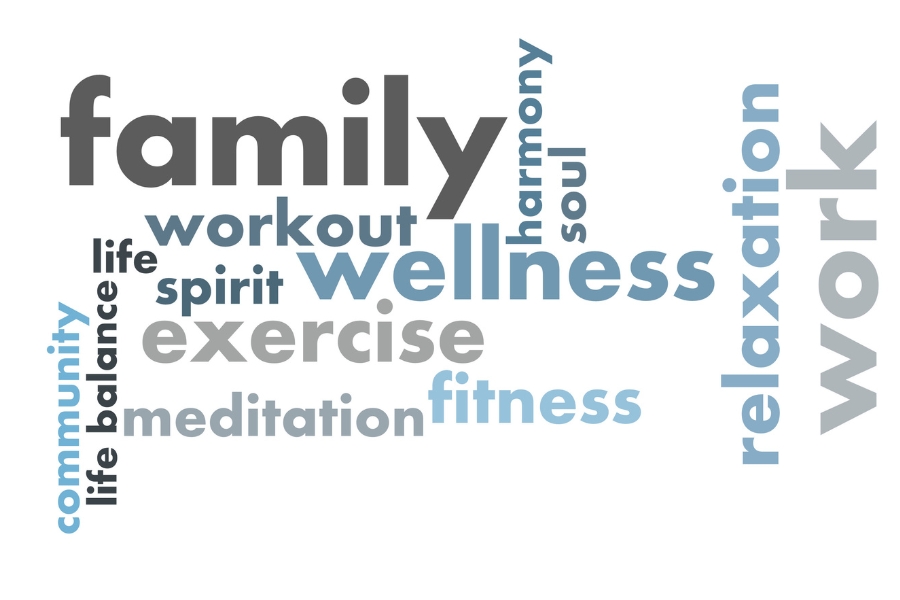Gone are the days when work-life balance meant leaving work at the office and not thinking about it until the next day. Today, career and personal lives are heavily intertwined, and balancing the two can be challenging. However, with some effective strategies, it’s possible to achieve work-life harmony – a state where both personal and professional lives complement each other, leading to a sense of overall well-being and satisfaction.
In this section, I’ll explore the concept of work-life harmony and discuss proven strategies to help you achieve a balance between your personal and professional life. By understanding the benefits of work-life harmony and implementing effective strategies, you can improve your overall well-being and satisfaction.
Table of Contents

Key Takeaways
- Work-life harmony is a state where both personal and professional lives complement each other, leading to a sense of overall well-being and satisfaction.
- Achieving work-life harmony involves implementing effective strategies to balance personal and professional responsibilities.
- Benefits of work-life harmony include increased satisfaction, reduced stress, and improved overall well-being.
- Strategies for finding work-life harmony include effective time management techniques, setting priorities, and finding the right balance between work and personal life.
- Setting boundaries for achieving work-life harmony is crucial, especially for leaders. Practical tips and techniques can help establish healthy boundaries and avoid burnout.
The Importance of Work-Life Harmony
As I mentioned, work-life harmony is more than just balancing personal and professional responsibilities. It’s a state where you feel satisfied and fulfilled in both areas. By prioritizing work-life harmony, you can unlock a range of benefits.
One of the most significant benefits is increased work-life satisfaction. When you feel more in control of your time, you’re less likely to experience burnout and more likely to enjoy your work. This can lead to higher levels of job satisfaction and better mental health overall.
Another important benefit of work-life harmony is reduced stress. When you can manage your time effectively and establish healthy boundaries, you can minimize the stress caused by conflicting demands on your time and energy.
Finally, work-life harmony can also lead to improved overall well-being. By caring for your personal and professional needs, you can feel more fulfilled and happy in all areas of your life.
Strategies for Finding Work-Life Harmony
As a professional, I understand the importance of achieving work-life harmony. It can be challenging to find the right balance between personal and professional responsibilities, but with the right strategies, it’s achievable. In this section, I’ll share some practical tips on how to find work-life harmony.
Effective Time Management
One of the key strategies for achieving work-life harmony is effective time management. By managing your time wisely, you can ensure that you’re giving enough attention to both personal and professional responsibilities. Start by creating a schedule and prioritizing your tasks. Focus on the most important tasks first and set realistic deadlines for completing them. This way, you can avoid overworking and reduce stress levels, which helps to maintain work-life balance.
Set Priorities
It’s essential to set priorities when it comes to work-life harmony. You need to identify the tasks and activities that are most important to you and allocate the required time accordingly. For example, if spending time with family is a priority, make sure to plan and schedule activities that involve them. If you’re feeling overwhelmed, don’t be afraid to delegate certain tasks and responsibilities to others.
Find the Right Work-Life Integration
Finding the right work-life integration is crucial for achieving work-life harmony. It’s essential to be flexible and willing to adjust your schedule to accommodate both personal and professional responsibilities. For example, working remotely or having a flexible work schedule can help create a better work-life balance. It’s important to keep in mind that work-life harmony is not a one-size-fits-all approach, and you need to find what works best for you.
By implementing these practical strategies for achieving work-life harmony, you’ll be able to reduce stress, improve overall well-being, and maintain a healthier work-life balance. Remember that it takes time and effort to find the right balance, but by prioritizing your tasks, managing your time effectively, and being flexible, you can achieve work-life harmony.
Setting Boundaries for Work-Life Harmony
As a leader, it can be challenging to find work-life harmony. We often feel the need to be available at all times to ensure that our teams are functioning smoothly. However, failing to set boundaries between our personal and professional lives can lead to burnout, stress, and decreased productivity.
That’s why it’s crucial to establish healthy boundaries that allow us to achieve work-life harmony. Here are some tips:
- Set clear expectations: Communicate your availability to your team and colleagues. Let them know when you are unavailable and when they can expect your response.
- Establish device-free time: Designate specific times when you disconnect from your phone and email during the day. This can be during meals, family time, or before bed.
- Learn to say no: Declining work requests or delegating tasks is okay. Don’t take on more than you can handle.
- Leave work at work: Avoid checking work emails or taking calls outside of work hours. This will help you separate your personal and professional life.
You can achieve work-life harmony by setting boundaries while still maintaining your professional responsibilities. It’s important to remember that it’s about setting boundaries for others and yourself. Be disciplined and respect your boundaries, and your team will follow suit.

Cultivating a Growth Mindset and Gratitude in Leadership
As a leader, cultivating a growth mindset and practicing gratitude can enhance your ability to manage both personal and professional responsibilities, ultimately leading to work-life harmony. A growth mindset emphasizes the belief that abilities and intelligence can be developed through dedication and hard work. This approach encourages continuous learning and improvement, which can help when faced with work-life harmony challenges.
On the other hand, gratitude involves recognizing and appreciating the positive aspects of life and work. Practicing gratitude can help cultivate a positive mindset, increase well-being, and foster stronger relationships with colleagues, family, and friends. This, in turn, can positively impact work-life harmony.
Cultivating a Growth Mindset
To cultivate a growth mindset, try the following:
- Embrace challenges as opportunities for growth and development.
- View failures as learning experiences and opportunities for improvement.
- Seek out constructive feedback to support growth and development.
- Focus on the process rather than the outcome, emphasizing effort and progress.
Practicing Gratitude
To practice gratitude, try the following:
- Express gratitude regularly to colleagues, family, and friends.
- Reflect on positive experiences and accomplishments regularly.
- Share your appreciation for others’ contributions and efforts.
- Take time to appreciate and enjoy the present moment.
“Gratitude can transform common days into thanksgivings, turn routine jobs into joy, and change ordinary opportunities into blessings.”
William Arthur Ward
By adopting a growth mindset and practicing gratitude, you can cultivate a positive outlook and enhance your ability to manage personal and professional responsibilities. This, in turn, can lead to improved work-life harmony and greater overall well-being.
Boosting Productivity and Well-being for Work-Life Harmony
When it comes to achieving work-life harmony, boosting productivity and well-being are essential. By implementing effective strategies, you can improve your overall satisfaction and well-being. Let’s explore some techniques that can help you achieve this balance.
1. Prioritization
One of the most critical components of boosting productivity and well-being is prioritization. Setting priorities allows you to manage your time efficiently and focus on the most important tasks. Start by identifying the most urgent and significant tasks on your to-do list, and tackle them first. Consider using a productivity tool such as a task list or a time management app.
2. Self-care
Self-care plays a vital role in boosting productivity and well-being. Taking care of yourself means ensuring that you get enough rest, exercise, and proper nutrition. It also means taking regular breaks to recharge your energy levels and engage in leisure activities that you enjoy. Taking care of your mental health is also critical, so consider mindfulness techniques or therapy to help you stay centered and focused.
3. Maintaining a Healthy Work Environment
Creating a healthy work environment can help boost productivity and well-being. Ensure that you have a comfortable and ergonomic workspace that allows you to work efficiently and without causing physical strain. Keep your workspace organized and clutter-free, and surround yourself with things that inspire you, such as plants or artwork.
4. Time Management Techniques
Time management techniques can help increase productivity and reduce stress. Consider techniques such as the Pomodoro method, which involves working in focused 25-minute intervals followed by short breaks. Another technique is blocking out specific times on your calendar for focused work or scheduling specific tasks during your most productive times of the day.
5. Don’t be Afraid to Delegate
A critical component of work-life harmony is delegating tasks effectively. Delegating tasks can help reduce your workload and increase your productivity. Identify tasks that can be delegated to others, such as administrative tasks or tasks that are not your strength, and delegate them to team members or hire an assistant. This will help free up your time and allow you to focus on tasks that require your unique skills and expertise.
By implementing these strategies, you can boost productivity and well-being, essential components of achieving work-life harmony. Remember to prioritize self-care and maintain healthy work boundaries, and you’ll be on your way to achieving a more balanced and fulfilling life.

Work-Life Harmony: A Personal Journey
As I’ve navigated through my personal and professional life, achieving work-life harmony has been a continuous journey. At times, I’ve struggled to balance my career and personal obligations, but through trial and error, I’ve discovered strategies that work for me.
One of the most effective ways I’ve found to achieve work-life harmony is by establishing clear boundaries. As much as I love my job, I recognize the importance of taking breaks and disconnecting from work to focus on my personal life. Knowing when to switch off and prioritize my own well-being has been invaluable in maintaining a healthy balance.
Cultivating a growth mindset and gratitude has also significantly impacted my journey towards work-life harmony. By focusing on learning and personal development rather than just completing tasks, I’ve found fulfillment in my personal and professional life. Practicing gratitude has helped me appreciate the good in each area of my life and maintain a positive outlook.
Another strategy that has been crucial to my journey is practicing self-care. This includes setting aside time for activities that bring me joy, such as exercise, reading, or spending time with loved ones. By prioritizing my own well-being, I have shown up as my best self in all areas of my life.
Overall, achieving work-life harmony is a process that requires mindful attention and intentional action. By setting boundaries, cultivating a growth mindset and gratitude, and practicing self-care, I’ve found a balance that works for me. It’s important to remember that this is a personal journey, and what works for one person may not work for another. However, by prioritizing work-life harmony, we can all improve our overall wellbeing and satisfaction.
Conclusion
As I reflect on the strategies for achieving work-life harmony, I am reminded of the importance of prioritizing balance. By implementing effective time management techniques, setting boundaries, and cultivating a growth mindset, we can unlock the benefits of work-life harmony.
It’s crucial to remember that work-life harmony is not a one-size-fits-all solution. It’s unique to each of us and requires intentional effort and commitment. By finding the right balance between work and personal life, we can improve our overall well-being and satisfaction.
As I conclude this article, I encourage you to take the time to reflect on your own work-life harmony journey. What strategies have worked for you? What adjustments can you make to improve your well-being?
Remember These Key Takeaways for Work-Life Harmony:
- Balance is key to achieving work-life harmony.
- Set boundaries for yourself and communicate them to others.
- Cultivate a growth mindset and gratitude for both personal and professional growth.
- Boost your productivity and well-being by prioritizing self-care.
Implementing these strategies can make a significant difference in your life. Start small and be patient with yourself as you navigate this journey.
I hope this article has provided valuable insights and strategies for achieving work-life harmony. Remember, it’s never too late to prioritize balance and unlock the benefits of work-life integration for a more satisfying and fulfilling life.
FAQ
What is work-life harmony?
Work-life harmony refers to the balance between one’s personal and professional life. It involves finding a way to integrate and prioritize both areas in a way that promotes overall well-being and satisfaction.
What are the benefits of work-life harmony?
Achieving work-life harmony can have numerous benefits, including increased satisfaction, reduced stress levels, improved mental and physical well-being, and better overall quality of life.
How can I achieve work-life harmony?
There are several strategies you can implement to achieve work-life harmony. These include effective time management, setting priorities, establishing boundaries, practicing self-care, and finding a healthy balance between work and personal commitments.
Why is setting boundaries important for work-life harmony?
Setting boundaries is crucial for work-life harmony, particularly for leaders. It helps maintain a healthy separation between work and personal life, prevents burnout, and allows for adequate rest and rejuvenation.
What role does a growth mindset and gratitude play in work-life harmony?
Cultivating a growth mindset and practicing gratitude can significantly contribute to work-life harmony. These qualities help individuals adapt to challenges, maintain a positive outlook, and appreciate the balance between personal and professional responsibilities.
How can I boost productivity and well-being for work-life harmony?
To boost productivity and well-being, it’s important to prioritize tasks, practice self-care, maintain a healthy work environment, and establish a routine that allows for work-life balance. Taking breaks, delegating tasks, and practicing mindfulness are also effective techniques.
Can you share any personal stories or experiences related to work-life harmony?
In the next section, we’ll dive into personal stories and experiences shared by individuals who have navigated the journey towards work-life harmony. These stories will provide valuable insights and inspiration for achieving balance in your own life.
What are the key takeaways for achieving work-life harmony?
The key takeaways for achieving work-life harmony include prioritizing balance, setting and maintaining boundaries, cultivating a growth mindset, practicing gratitude, and implementing strategies to boost productivity and well-being.


